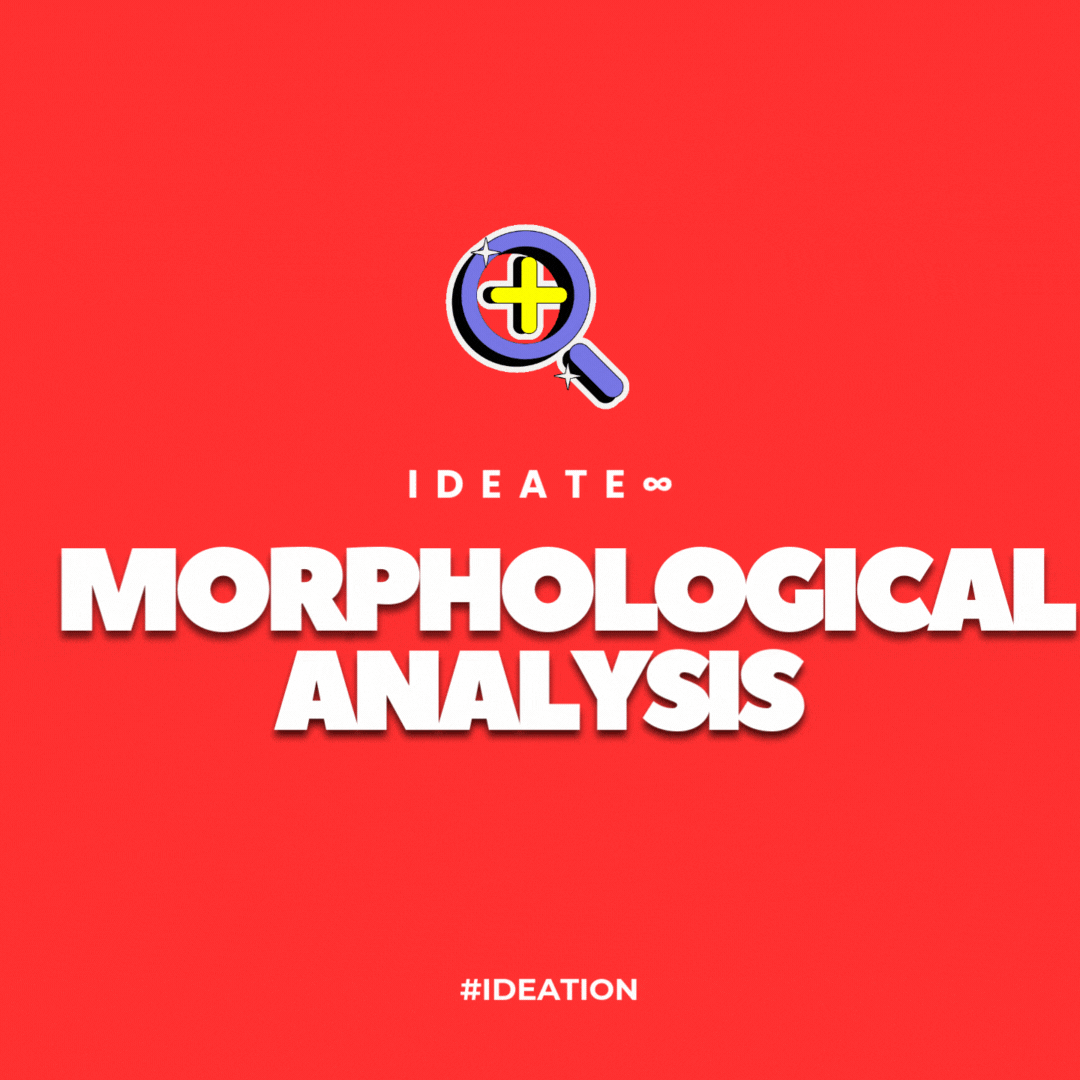Morphological Analysis: Systematically Combining Possibilities to Spark Innovation
Introduction
When innovation challenges are complex, multi-dimensional, or involve conflicting constraints, unstructured brainstorming won’t cut it. You need a tool that can systematically explore the full solution space—not just the obvious or familiar pathways.
Enter Morphological Analysis: a time-tested method for structured idea generation that breaks down problems into their key dimensions and recombines them in new, often unexpected, ways.
At Hangar 75, we use Morphological Analysis within our IDEATE∞ platform to help teams map, explore, and prioritize solution combinations that traditional ideation techniques might never uncover.
What is Morphological Analysis?
Morphological Analysis is a method of decomposing a challenge into its essential parameters, then listing all possible options for each parameter and systematically recombining them to generate innovative solutions.
The output is typically a morphological matrix (also known as a Zwicky box), where:
Columns = Parameters or dimensions of the problem
Rows = Options for each parameter
Combinations = Unique configurations that may solve the challenge
For example, designing a new delivery service might involve dimensions like transport mode, customer interface, payment model, and delivery window—each with multiple possible values.
This structured recombination reveals non-obvious configurations that would likely be missed in freeform brainstorming.
Why This Technique Matters in Corporate Innovation
Many enterprise innovation challenges are multi-factorial—they involve constraints across departments, systems, user segments, and compliance zones. Morphological Analysis enables teams to:
Explore the full breadth of possibility
Understand trade-offs between options
Create a traceable logic for idea generation
Identify hybrid solutions across domains
Break large problems into manageable pieces
It’s particularly useful when you need creativity without sacrificing structure.
Pros of Morphological Analysis
Highly Systematic: Ensures thorough exploration of solution space
Reveals Non-Obvious Combinations: Mixes ideas across parameters
Great for Complex Challenges: Helps manage multi-dimensional decision-making
Balances Logic and Creativity: Encourages invention within a framework
Excellent for Cross-Functional Teams: Clarifies where different teams contribute
Cons of Morphological Analysis
Setup Can Be Time-Consuming: Requires thoughtful parameter definition
Can Produce Overload: May yield hundreds of combinations needing prioritization
Needs Skilled Facilitation: Poorly chosen dimensions can limit value
Not Ideal for Emotional or Narrative-Driven Ideation: Lacks intuitive storytelling flow
Risk of Becoming Mechanistic: Creativity may be constrained if used rigidly
Illustrative Example: Designing a Hybrid Wellness Experience
A global hotel chain working with Hangar 75 wanted to create a hybrid wellness product combining physical, digital, and in-room elements.
Using Morphological Analysis within IDEATE∞, we defined key parameters:
Mode of Delivery (In-person, App, Wearable, VR)
Focus Area (Sleep, Nutrition, Movement, Mindfulness)
Time of Day (Morning, Evening, On-Demand)
Engagement Style (Passive, Interactive, Guided, Self-Directed)
By recombining options across parameters, we generated over 100 distinct concepts—including a VR-guided evening breathwork routine, and a wearable-triggered in-room environment change tied to user stress levels.
Several of these were piloted across flagship properties with strong NPS scores and premium upsell opportunities.
Where Morphological Analysis Fits Within the IDEATE∞ Platform
In IDEATE∞, Morphological Analysis is integrated into our Structured Innovation Toolkit, where users can:
Select from pre-built industry parameter libraries
Define custom dimensions and value sets
Auto-generate combinatorial ideas
Apply AI scoring to highlight promising configurations
Filter based on feasibility, impact, and user alignment
We frequently use this method after Design Thinking or Jobs to Be Done to operationalize insights into executable concepts.
The Strategic Role of Morphological Analysis in Innovation Portfolios
Best used when:
Problems have multiple interacting components
Teams need to make innovation choices visible
The challenge involves platform design, service architecture, or modular solutions
You want to generate structured diversity of options
Projects are multi-stakeholder or cross-functional
It’s less effective when dealing with highly abstract, emotional, or early-stage “visioning” challenges. In those cases, pair it with Oblique Strategies, Dark Horse Ideation, or Psychedelic-Inspired Ideation.
Final Thoughts: If Innovation Is a Puzzle, Morphological Analysis Builds the Board
Breakthrough innovation isn’t always about wild ideas—it’s often about making the right combinations. Morphological Analysis turns complexity into clarity, giving corporate teams a structured way to generate and compare ideas that actually work.
At Hangar 75, we’ve reimagined this classic method for modern needs. Inside IDEATE∞, Morphological Analysis becomes a fast, intelligent, and scalable tool that drives innovation across industries.
Ready to Unlock Transformational Ideas?
This is just one of the many powerful techniques embedded within IDEATE∞, Hangar 75’s enterprise-grade ideation engine. Whether you’re launching a new product, solving complex challenges, or evolving your innovation strategy, IDEATE∞ helps you generate, enrich, and prioritize high-impact ideas—fast.
👉 Explore how IDEATE∞ can be deployed inside your organization.
Schedule a no-risk, personalized demo and discover precisely how IDEATE∞ can drive strategic advantage for your organization.

